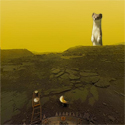|
Rip Testes posted:Good to come across the thread. I live in an urban area and my skies are poo poo due to light pollution, reducing me to really only planetary and lunar observing. I've been trying to get into the planetary imaging for a couple of years now and have sunk a bit of coin into that without justifiable results, the problem being the seeing conditions are really disappointing where I live generally. Undaunted I recently decided to throw even more money into the money pit that is amateur astronomy and bough myself a dedicated solar scope, figuring that not only is the Sun around a lot more than things in the night sky, but it generally works well with my sleeping schedule (as in not interfering with it). After looking through a hydrogen alpha scope a couple of years ago for an eclipse I knew I needed one of those. Then I started looking at the prices on that and got really dissuaded, tho recently I was able to score some good kit for a few thousand off retail. Holy gently caress this is gorgeous. I never knew you could get this kind of results with the Sun with amateur equipment.
|
|
|
|

|
| # ? May 29, 2024 19:16 |
|
Hremsfeld posted:Interesting, thanks! So how would they detect it if it doesn't transit across, then? The planet's gravity causes the star to wobble and that wobble is detectable.
|
|
|
|
GutBomb posted:The planet's gravity causes the star to wobble and that wobble is detectable. Okay, Clarke was officially right about advanced technology. Thanks again!
|
|
|
|
For those of us who don't have a telescope or live in a bright area would you guys mind posting some shots of what you can see with your scope and what we are looking at? I love this kind of thing but I can only make viewing parties so often.
|
|
|
|
MattD1zzl3 posted:For those of us who don't have a telescope or live in a bright area would you guys mind posting some shots of what you can see with your scope and what we are looking at? I love this kind of thing but I can only make viewing parties so often. Depends on what you mean by 'seeing'. If you're strictly visually observing, the planets are generally minute and void of detail, barring mars every couple of years at opposition, Saturn with its rings and with a 6"+ scope bands on Jupiter. Obviously the moon is pretty stunning, but it can get kind of old with its same old face. The Sun is more dynamic which is a big plus and very bright, meaning you can buy a small used Coronado PST and see some cool stuff for a few hundred. With an 8" scope you begin to be able to make out some of the structure in something like the Orion nebula, but nothing is going to in color. Star clusters look like a collection of bright dots. Not that is not interesting, its nothing like what you see in a photo, hence why many amateurs ending up getting into astrophotography to indirectly observe the sky.
|
|
|
|
Luneshot posted:Holy gently caress this is gorgeous. I never knew you could get this kind of results with the Sun with amateur equipment. Thanks, I'm just getting into the Sun photo bit. I know it amateur, but it certainly doesn't feel like it when shell for one of these. Fortunately found both pieces of gear from a seller for around half off. Couldn't pass it up.
|
|
|
|
National astronomy day
|
|
|
|
Yup! My club (Colorado Springs astronomical society) is doing a big public star party tonight. Last one of the year before it starts getting colder than Dick Cheney's cloaca at night.
|
|
|
|
I've had my iOptron CEM60 for a few months now, got to say as a mount it's pretty much amazing, everything I had gone in hoping it would be. I'm starting to get actual work done with it now as well which is nice!  NGC6888 - The Cresent Nebula - HA and OIII by tmarkuk, on Flickr NGC6888 - The Cresent Nebula - HA and OIII by tmarkuk, on FlickrMy aim this winter is to get on with some actual science on top of the pretty picture taking.
|
|
|
|
Jekub posted:I've had my iOptron CEM60 for a few months now, got to say as a mount it's pretty much amazing, everything I had gone in hoping it would be. gently caress I need to get in on this.
|
|
|
|
Jekub posted:I've had my iOptron CEM60 for a few months now, got to say as a mount it's pretty much amazing, everything I had gone in hoping it would be. That's a great pic. I'm trying to figure out my photography plan for the eclipse in a couple days. I'm trying to decide if I should go through the hassle of dragging my telescope somewhere so I can switch between widefield shots and telescope shots, or if I should stay home and not bother finding the landscape.
|
|
|
|
Jekub posted:I've had my iOptron CEM60 for a few months now, got to say as a mount it's pretty much amazing, everything I had gone in hoping it would be. jeez $2500 for a mount. I want it so much.
|
|
|
|
£2100 (around $3370) over here, which is quite a markup. Shipping, import duties and dealer markup all not helping. It's gone up by £200 since I bought it though so I'll count myself lucky. I should probably write a full review at some point, it does have some annoying things about it which are worth mentioning.
|
|
|
|
I've been taking my camera out at night to do some random astrophotography shots when I get bored lately, and was thinking about taking it further and actually getting a telescope, hopefully to do some planetary shots. Tracking would be a plus, especially if I start doing longer exposures on nebulae/clusters in the future, which I'd really like to consider once I get better at this. I'm not really looking for anything remotely professional-quality. I found one that seems appealing and is in the right price range, the Orion Skyquest XT8i along with a couple of relatively cheap adapters to mount my camera straight onto it. Does this seem like a good place to start? Any advice would be greatly appreciated. Here's a shot I took on Sunday night, sans-telescope: 
|
|
|
|
If you want to do photography through a telescope for long exposures, you'll probably need an equatorial mount. Unless you have a field derotator, a dobsonian mount won't work because the field of view will rotate as time goes on. It's slow, but it's enough to mess up long exposures.
|
|
|
|
Luneshot posted:If you want to do photography through a telescope for long exposures, you'll probably need an equatorial mount. Unless you have a field derotator, a dobsonian mount won't work because the field of view will rotate as time goes on. It's slow, but it's enough to mess up long exposures. Thanks for the advice. That may be something I get in the future... I'm guessing I can't get an equatorial mount for a dobsonian scope? Also, how long do the exposures need to be before it becomes an issue? At this point I'm not really considering hour-long exposures, I may consider another telescope/mount for that in the future if I really get into the photography aspect. As of now, there's too much light pollution in my area for very long exposures.
|
|
|
|
Jekub posted:I've had my iOptron CEM60 for a few months now, got to say as a mount it's pretty much amazing, everything I had gone in hoping it would be. That's a hell of an image - I'd love to hear what an astronomer from 50 years ago would make of it. Tell me about the science; I used to do astronomy for science for (not very much) money.
|
|
|
|
Luneshot posted:If you want to do photography through a telescope for long exposures, you'll probably need an equatorial mount. Unless you have a field derotator, a dobsonian mount won't work because the field of view will rotate as time goes on. It's slow, but it's enough to mess up long exposures. Now I get to show how much of a newbie I am at this... it looks like that scope only does object finding, but not tracking. Glad I posted here before ordering it. I'll keep shopping around for something that tracks and that I can mount a camera onto. Thanks for the help.
|
|
|
|
Golden-i posted:Now I get to show how much of a newbie I am at this... it looks like that scope only does object finding, but not tracking. Glad I posted here before ordering it. That's weird, if it's capable of finding objects, then it should have the parts necessary to track them. Eclipse chat: I'm not liking my odds of getting to see it, there's storms in the forecast for early tomorrow morning.
|
|
|
|
Venusian Weasel posted:That's weird, if it's capable of finding objects, then it should have the parts necessary to track them. It seems like you get it calibrated to your time/location and it uses arrows on the computer screen to direct you where to point the telescope, so it's not actually motorized. Slightly misleading, it seems.
|
|
|
|
Golden-i posted:It seems like you get it calibrated to your time/location and it uses arrows on the computer screen to direct you where to point the telescope, so it's not actually motorized. Slightly misleading, it seems. That's a really goofy setup, then. Good luck on your telescope search!
|
|
|
|
Venusian Weasel posted:That's a really goofy setup, then. Good luck on your telescope search! Thanks! I did find one that finds and tracks, it's a little more expensive but I'm seriously considering it: Orion 10134 Dobsonian Telescope I'm not sure what kind of accessories I want to get with it, aside from the obvious 12v adapter for the motor to work (no batteries in this one, I guess).
|
|
|
|
Golden-i posted:It seems like you get it calibrated to your time/location and it uses arrows on the computer screen to direct you where to point the telescope, so it's not actually motorized. Slightly misleading, it seems. I have one like this. It works decently, but it's not exactly high end. Also, just to clear things up a bit more: A dobsonian/altazimuth mount can be motorized to track the stars, but it's still not suitable for astrophotography- it has to track in two axes, and the field of view will rotate as the night goes on. It works great for visual observing, but it's not meant for long exposure photography unless you have a field derotator, which is pretty expensive. If you want to do long exposure astrophotography of objects like nebulae and galaxies, you absolutely need an equatorial mount, because it only needs to track in one axis and the field won't rotate over time. Unfortunately, computerized equatorial mounts are not cheap. That's not to say that you can't do astrophotography with a Dobsonian- I'm just saying that you will be time limited no matter how good your tracking is if you have any sort of altazimuth mount. There's also the option of a homemade equatorial platform/barn door tracker, but that requires more work. I'm not sure what the time limit exactly is on how long you can use an altazimuth mount and still get decent results, but my guess is that you may start seeing the effects of field rotation as early as 5-10 minutes into an exposure. Luneshot fucked around with this message at 20:07 on Oct 7, 2014 |
|
|
|
That's great info, thanks. I'm having a hard time finding a reflector/refractor on an equatorial mount that's in my price range and computerized, maybe I'll wait until I have a little more money to spend.
|
|
|
|
Golden-i posted:That's great info, thanks. I'm having a hard time finding a reflector/refractor on an equatorial mount that's in my price range and computerized, maybe I'll wait until I have a little more money to spend. Yeah, astrophotography is an expensive hobby unfortunately. I've always preferred visual observing so it's not really an issue for me, but I've picked up enough from others and my own experiences to have a decent idea about the cost and effort involved. If other people here are more experienced with it, feel free to chime in. One possibility is to buy the mount and scope separately- that way you can pick and choose what fits your needs.
|
|
|
|
I have too many expensive hobbies. Not that I'm complaining. Mostly I'm worried about spending too little and being disappointed. I found an 8-inch reflector with a motorized, tracking equatorial mount, and it's in my price range. Now I need to figure out what the catch is.
|
|
|
|
Luneshot posted:I have one like this. It works decently, but it's not exactly high end. Field rotation isn't too big a problem, as long as you keep your individual exposures short. The programs you'll be using to stack exposures anyway can detect and rotate the pictures. When I was doing untracked comet photography from a tripod, it would take me 45 minutes to collect enough images to make a 20-minute exposure, and the program I used (DeepSkyStacker) had no problem with it.
|
|
|
|
I imagine the biggest issue with photography on that dobsonian is that it uses two axes and will only adjust one at a time while tracking, so you get sort of a stair-step effect as opposed to a straight line? e - I think I might order the scope/mount that I linked in my last post. Any suggestions for accessories/must-haves? Golden-i fucked around with this message at 21:19 on Oct 7, 2014 |
|
|
|
There are so many options around now for imaging, it's opened it up significantly. Price tends to get horrendous when you want to image at increased focal length and aperture at which point the demands on your mount scale up significantly, if you start wanting to image narrowband then it scales up again. The old rule of thumb of 60% of the budget goes on the mount still applies. I always used to recommend people start with something like an HEQ5 or EQ6 with a small refractor and cheap Canon DSLR body. However there are now loads of great options for doing long exposure widefield imaging using standard DSLR bodies and lenses that I would probably advise anyone to start out there now. Work out what it is you want to achieve and why and then you can start figuring out what you will need to do it. It's taken me years to reach the point where I own a £2500 camera which is only used to take photos of space. It is really, really good at it mind. On the question of doing actual science, I have a permanent setup, with that I can produce reliable, repeatable observational data, something my old mount lacked the accuracy for. I can now start working with the British Astronomical Association, the first part of which will be proving my ability to capture quality data, accurately reporting position and magnitude information. At that point I can start working with one of the sections, hunting for or providing observational data on nova, near earth objects, variable stars, comets etc. The window for amateurs finding new objects is closing somewhat these days, but the need for high quality follow up data still exists.
|
|
|
|
Golden-i posted:I think I might order the scope/mount that I linked in my last post. Any suggestions for accessories/must-haves? What are you intending to use it for? You will find that an incredibly frustrating combination for imaging but a good start for visual observation. With any reflector get some collimation tools, and learn how to collimate a telescope.
|
|
|
|
Jekub posted:What are you intending to use it for? You will find that an incredibly frustrating combination for imaging but a good start for visual observation. Your write-up above is great, doing official work for the British Astronomical Association is a pretty awesome concept. I've always had an interest in astronomy and was looking for a telescope that could get me better views of things beyond just the planets, but at the same time I have an interest in photography and would like to combine the two in some capacity. Exactly what capacity, I'm not sure yet. It would be nice to find a telescope that could give me the best of both worlds, but not be too overwhelming for a complete beginner like me. If I need to wait a bit longer so I can save up to afford a setup worth having, I'm totally OK with that. Also, I read about the collimation process, it sounds interesting and probably something I'd do right out of the box just because I like to tinker with things.
|
|
|
|
Jekub posted:The window for amateurs finding new objects is closing somewhat these days, but the need for high quality follow up data still exists. I'd say the window is still wide open for amateur nova and comet discoveries - depsite having 5 or 6 active synoptic surveys, they still don't cover the sky quickly enough to pick up these sorts of objects. Amateur and semi-pro comet discoveries have actually increased somewhat over the last few years. Another field in which amateur observatories are likely to remain important is planetary imaging. There's not really a lot of focus on them from professional observaties (rarely does it produce the Big Science that keeps observatories funded), but stuff like storm and impact watches are still important. If I ever get enough money to set up a small observatory, that's what I'm going to focus on. (That and comets)
|
|
|
|
I decided to take Jekub's advice and looked into spending more on the mount, as I'm sure I'll be a lot happier than what seems to come bundled with most telescopes. I found this mount that seems promising. My question now is, how large of a reflector could I realistically put on this mount without overtaxing the motors? Would an 8" or 10" with a camera+adapters be too much weight?
|
|
|
|
Golden-i posted:I decided to take Jekub's advice and looked into spending more on the mount, as I'm sure I'll be a lot happier than what seems to come bundled with most telescopes. I found this mount that seems promising. My question now is, how large of a reflector could I realistically put on this mount without overtaxing the motors? Would an 8" or 10" with a camera+adapters be too much weight? I use that mount with an 8" reflector. Actually used it this morning with my DSLR to get some shots of the eclipse. So you should be fine on that mount with what you want. When I purchased mine, I actually purchased a bundle that came with the mount, 8" scope, and extra counterweight for the size scope I got.
|
|
|
|
Sentinel82 posted:I use that mount with an 8" reflector. Actually used it this morning with my DSLR to get some shots of the eclipse. So you should be fine on that mount with what you want. When I purchased mine, I actually purchased a bundle that came with the mount, 8" scope, and extra counterweight for the size scope I got. Thanks for this - I dug around and found a similar bundle. I had found a good deal on a 10" reflector but apparently the tube weighs ~25lbs... it may be too much with all of the parts attached. How do you like the bundle with the 8"?
|
|
|
|
With all the solar talk going on, what's the best option for attaching a solar filter to my telescope? I don't think I can justify dropping a few grand on a dedicated solar telescope just yet. I've found the Thousand Oaks filters, which seem to be the go-to name from what I can tell. There seems to be 2 options worth considering: one is metalized glass (Glass 2+), and the other is the R-G Film. Is there any difference aside from cost and durability? The glass costs more, but all else equal I'd consider it a worthwhile investment if it's a more durable piece of equipment. If money were no object, would there be a reason to consider the R-G film? Also, how safe is projection with a mask on the tube? I have a Celestron Omni XLT 150 reflector, and the tube cover has a couple small offset holes in it. I'm told that these are for solar projection, in that the smaller holes cut down on the amount of light/heat allowed in to the telescope. Is that actually safe, or is it just as likely to heat things up and damage the internal components? And would I be correct in thinking that trying to magnify the projected image by using an eyepiece is a terrible idea? All this is in anticipation of the solar eclipse in a couple weeks. I got up early this morning to watch the lunar eclipse this morning, and I had a good time taking various crappy pictures through the scope with the "universal camera mount" from Celestron. I'd like to get some pictures of the solar eclipse as well, weather permitting.
|
|
|
|
Golden-i posted:Thanks for this - I dug around and found a similar bundle. I had found a good deal on a 10" reflector but apparently the tube weighs ~25lbs... it may be too much with all of the parts attached. I'm very happy with it so far. I did have a problem with the controller when I first got it and had to send it back to Celestron, but there were no issues getting it replaced. I haven't gotten as much use out of it as I've wanted to, but the times I've used it, I've been very happy with it. Easy to set up and align (although I could stand to put more effort into it). Controls are easy to use and the menu systems they use to access objects seem to make good sense to me, so it makes it easier to find what I'm looking for. I do love the fact that if I'm feeling extremely lazy, I can simply plug it in to my laptop, load up Stellarium and point and click to point it to objects. I suppose you can do that with a lot of similar mounts too... Overall, I'm very happy with it. It definitely does what I need at my level.
|
|
|
|
Sentinel82 posted:I'm very happy with it so far. I did have a problem with the controller when I first got it and had to send it back to Celestron, but there were no issues getting it replaced. I haven't gotten as much use out of it as I've wanted to, but the times I've used it, I've been very happy with it. Easy to set up and align (although I could stand to put more effort into it). Controls are easy to use and the menu systems they use to access objects seem to make good sense to me, so it makes it easier to find what I'm looking for. I do love the fact that if I'm feeling extremely lazy, I can simply plug it in to my laptop, load up Stellarium and point and click to point it to objects. I suppose you can do that with a lot of similar mounts too... Overall, I'm very happy with it. It definitely does what I need at my level. Have you used it for any long exposure photos of any DSOs? If so, care to post some pics? I am interested in a cheap but usable setup like this but I want to see how it performs.
|
|
|
|
GutBomb posted:Have you used it for any long exposure photos of any DSOs? If so, care to post some pics? I am interested in a cheap but usable setup like this but I want to see how it performs. I haven't used it as much as I want to yet. Since I bought it, I've gotten married and bought a new house and that's just in the last year. I've done 2 attempts at some DSO imaging, but I still need some work on my techniques and the technical aspects of it (stacking and such) before I have any real usable photos. I can say that once aligned properly, it is very good with long exposures. I've done some star field long exposure shots and they've turned out quite nicely. Of course... I don't know what I did with them. DaveSauce posted:With all the solar talk going on, what's the best option for attaching a solar filter to my telescope? I don't think I can justify dropping a few grand on a dedicated solar telescope just yet. I'm interested in this as well, especially with the partial eclipse coming up in 2 weeks and a full eclipse in 3 years (yeah, bit of lead time there). Orion has one out there for $50 and I've seen a few others for less than $100, but are they worth a drat or just a waste of money? Can they be used for both viewing and imaging, or are other filters needed as well?
|
|
|
|

|
| # ? May 29, 2024 19:16 |
|
Did anyone get any decent shots of the lunar eclipse last night? Gimme them pics.
|
|
|



















